Showing Spotlights 129 - 136 of 332 in category All (newest first):
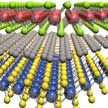 A new paper reviews the studies to date that have addressed the toxicity of 2D materials, particularly emphasizing the preparation methods and resulting physicochemical properties that dictate their interactions with biological systems. In addition, due to its importance in determining exposure risk, this review summarizes key results from the literature concerning the environmental fate of 2D materials. The authors hope that a thorough understanding of these issues will inform ongoing efforts to realize the design of safer 2D materials.
A new paper reviews the studies to date that have addressed the toxicity of 2D materials, particularly emphasizing the preparation methods and resulting physicochemical properties that dictate their interactions with biological systems. In addition, due to its importance in determining exposure risk, this review summarizes key results from the literature concerning the environmental fate of 2D materials. The authors hope that a thorough understanding of these issues will inform ongoing efforts to realize the design of safer 2D materials.
Jun 19th, 2018
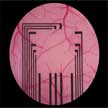 Although advances in optical technologies such as multi-photon microscopy and optogenetics have revolutionized researchers' ability to record and manipulate neuronal activity, integration of optical modalities with electrical recordings is challenging due to generation of light-induced artifacts. In new work, scientists report a transparent graphene microelectrode neural implant that eliminates light-induced artifacts to enable crosstalk-free integration of 2-photon microscopy, optogenetic stimulation, and cortical recordings in the same in vivo experiment.
Although advances in optical technologies such as multi-photon microscopy and optogenetics have revolutionized researchers' ability to record and manipulate neuronal activity, integration of optical modalities with electrical recordings is challenging due to generation of light-induced artifacts. In new work, scientists report a transparent graphene microelectrode neural implant that eliminates light-induced artifacts to enable crosstalk-free integration of 2-photon microscopy, optogenetic stimulation, and cortical recordings in the same in vivo experiment.
May 24th, 2018
 At the nanoscale, materials become exceedingly sensitive to external perturbations. This is quite a relevant factor for wearable and flexible applications, where materials would always bear a certain degree of variable strain/stress. So far it has been very difficult to characterize strain effects in 2D materials, which is crucial to understanding strain-matter interactions. Researchers demonstrate that this limitation can be overcome by using a technique based on Kelvin Probe Microcopy.
At the nanoscale, materials become exceedingly sensitive to external perturbations. This is quite a relevant factor for wearable and flexible applications, where materials would always bear a certain degree of variable strain/stress. So far it has been very difficult to characterize strain effects in 2D materials, which is crucial to understanding strain-matter interactions. Researchers demonstrate that this limitation can be overcome by using a technique based on Kelvin Probe Microcopy.
May 9th, 2018
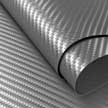 Today, the common engineering solution to manufacture carbon fiber reinforced plastic composite materials is based on cross-plied carbon fibers in a polymer resin requiring high temperature cure. In contrast, researchers now have demonstrated cross-linked graphene sheets that are manufacturable from graphene platelets, which are resin-free, processable at low temperature, and contain less than 10 wt.% additives. This advance provides a universal strategy for converting inexpensive graphene platelets into high performance polymer-free graphene sheets for the development of next-generation lightweight multifunctional materials.
Today, the common engineering solution to manufacture carbon fiber reinforced plastic composite materials is based on cross-plied carbon fibers in a polymer resin requiring high temperature cure. In contrast, researchers now have demonstrated cross-linked graphene sheets that are manufacturable from graphene platelets, which are resin-free, processable at low temperature, and contain less than 10 wt.% additives. This advance provides a universal strategy for converting inexpensive graphene platelets into high performance polymer-free graphene sheets for the development of next-generation lightweight multifunctional materials.
May 8th, 2018
 Carbon nanomaterials, including graphene-based materials, are widely gaining popularity in practical applications of nanomanufacturing. As a result, it becomes more and more likely that the unwanted introduction of such materials into the environment may occur. In particular, aqueous habitats might be severely affected by any accidental carbon nanomaterials exposure. Researching these potential environmental toxicity effects, scientists have found that kaolin, a cheap and abundant clay, can act as a powerful antidote to remediate the toxic effects of graphene oxide.
Carbon nanomaterials, including graphene-based materials, are widely gaining popularity in practical applications of nanomanufacturing. As a result, it becomes more and more likely that the unwanted introduction of such materials into the environment may occur. In particular, aqueous habitats might be severely affected by any accidental carbon nanomaterials exposure. Researching these potential environmental toxicity effects, scientists have found that kaolin, a cheap and abundant clay, can act as a powerful antidote to remediate the toxic effects of graphene oxide.
Apr 25th, 2018
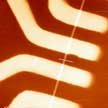 The advent of graphene resulted in a massive, world-wide, effort directed at investigation of other two-dimensional (2D) layered materials. One-dimensional (1D) bundled materials have received considerably less attention. Similar to the 2D layered materials with covalently bonded layers separated by the van der Waals gaps, the 1D materials consist of covalently bonded one-dimensional wires with van der Waals gaps between the wires. Researchers now have discovered that quasi-1D nanoribbons reveal an exceptionally high current density at the peak of the stressing DC current. This level of the current density exceeds that in any conventional metals like copper by almost two orders of magnitude.
The advent of graphene resulted in a massive, world-wide, effort directed at investigation of other two-dimensional (2D) layered materials. One-dimensional (1D) bundled materials have received considerably less attention. Similar to the 2D layered materials with covalently bonded layers separated by the van der Waals gaps, the 1D materials consist of covalently bonded one-dimensional wires with van der Waals gaps between the wires. Researchers now have discovered that quasi-1D nanoribbons reveal an exceptionally high current density at the peak of the stressing DC current. This level of the current density exceeds that in any conventional metals like copper by almost two orders of magnitude.
Apr 19th, 2018
 As a promising large-scale energy storage technology, redox flow batteries (RFBs) are attracting increasingly more research attention. For RFB separators, the essential requirement is achieving high ionic conductivity with minimal cross-over at low cost. Researchers now have demonstrated a proof-of-concept graphene oxide (GO) membrane as separator for large-scale energy RFBs. Their work shows that the two-dimensional nanochannel structure and low frictional water flow inside micrometer-thick GO laminates make this material an attractive candidate membrane for large-scale energy storage systems.
As a promising large-scale energy storage technology, redox flow batteries (RFBs) are attracting increasingly more research attention. For RFB separators, the essential requirement is achieving high ionic conductivity with minimal cross-over at low cost. Researchers now have demonstrated a proof-of-concept graphene oxide (GO) membrane as separator for large-scale energy RFBs. Their work shows that the two-dimensional nanochannel structure and low frictional water flow inside micrometer-thick GO laminates make this material an attractive candidate membrane for large-scale energy storage systems.
Apr 17th, 2018
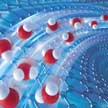 For most viscous liquids, the solid surface of surrounding channel walls poses friction resistance to the flowing liquid, causing a loss of velocity at the liquid/solid interface. As a result, for regular surfaces the energy required for nanofluidic applications is enormous because of the tremendous hydraulic resistance inside nanoscale conduits. A new technique to accurately measure the hydraulic resistance inside graphene nanofluidic channels makes increasing the efficiencies of most nanofluidic applications possible.
For most viscous liquids, the solid surface of surrounding channel walls poses friction resistance to the flowing liquid, causing a loss of velocity at the liquid/solid interface. As a result, for regular surfaces the energy required for nanofluidic applications is enormous because of the tremendous hydraulic resistance inside nanoscale conduits. A new technique to accurately measure the hydraulic resistance inside graphene nanofluidic channels makes increasing the efficiencies of most nanofluidic applications possible.
Mar 28th, 2018
 A new paper reviews the studies to date that have addressed the toxicity of 2D materials, particularly emphasizing the preparation methods and resulting physicochemical properties that dictate their interactions with biological systems. In addition, due to its importance in determining exposure risk, this review summarizes key results from the literature concerning the environmental fate of 2D materials. The authors hope that a thorough understanding of these issues will inform ongoing efforts to realize the design of safer 2D materials.
A new paper reviews the studies to date that have addressed the toxicity of 2D materials, particularly emphasizing the preparation methods and resulting physicochemical properties that dictate their interactions with biological systems. In addition, due to its importance in determining exposure risk, this review summarizes key results from the literature concerning the environmental fate of 2D materials. The authors hope that a thorough understanding of these issues will inform ongoing efforts to realize the design of safer 2D materials.
 Subscribe to our Nanotechnology Spotlight feed
Subscribe to our Nanotechnology Spotlight feed





